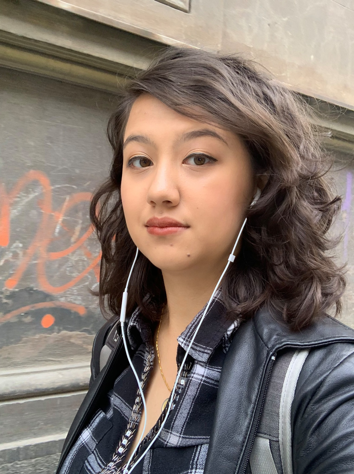By Deanna Pistono
I was around six years old when I first asked myself: why do girls wear dresses, but boys don’t? Why is it ok for me to wear pants, but not for a boy to wear a dress? Why is a boy in a dress funny and weak, and why is a girl in pants strong?
Why? Children ask questions, and while we may think they’re naïve, they do know more than you think. Already, I understood— without anyone having ever explained to me—that there was a line in the sand between me and the boys at school.
At the time, I decided that boys didn’t wear dresses because they “didn’t want to”—a perfectly acceptable answer from a six-yearold. But, looking back, maybe the question shouldn’t have been why they don’t, but why don’t they want to? What was it about a dress—innocently swishing around your legs, a whole outfit in one—that provoked so much ire?
The prompt for this issue is women’s spaces in a nonbinary world. As I think I’ve shown with the example from my past, I’ve always been a questioner and a bit of a quibbler—and the use of the word “nonbinary” was what caught my eye.
Is the world, I questioned, really nonbinary?
While people can and will be free to choose what they believe, to me it’s pretty clear that my answer has to be no. While I identify as a cis woman, I’ve had the privilege of knowing several wonderful nonbinary people. While we do not face oppression in the same ways, there is no doubt that they can be treated just as harshly as women by societal standards—something that, you’d think, wouldn’t occur in a nonbinary world—a world, which, by definition, would center their experiences.
It’s not a nonbinary world that we live in. Our world is overwhelmingly patriarchal—historically and currently run by men—usually straight, white men—and constitutes a space toxic to both women and gender non-conforming people. After all, patriarchal society upholds a gender binary—probably because, if there are assumed to be only two genders, you can more easily say one is “superior,” and thus “justify” institutional sexism and misogyny. The idea that the gender dichotomy doesn’t exist, and/ or that it is fluid rather than fixed, threatens that basic principle of male superiority. So, nonbinary and genderfluid people are just as likely as “rebellious” women to be hammered into compliance by the patriarchy.
Women’s spaces are important in that they allow women to gather and to discuss situations relevant to shared experiences, without the emotional burden of having to explain these experiences. Mixed spaces, however—where various identities marginalized by masculine, white and cis-heteronormative world coexist—are equally important in providing spaces for marginalized identities. One need not threaten the other, and both remain necessary.
Deanna Pistono is a mixed-race Asian-American woman who grew up in China. She graduated from Cornell University in 2019, and writes short fiction and poetry at thisissealedinink.wordpress.com/.

